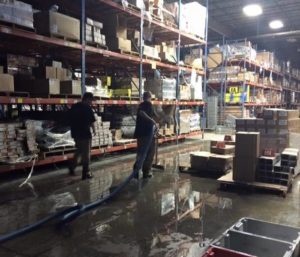In reviewing and negotiating many lease agreements for clients through the years, we have found tenants often have an overlooked risk of uninsured damage to premises they lease.
A common misconception held by insurance buyers and real estate attorneys, and even sometimes their insurance agents, is that damage to leased premises is covered under the Tenant’s Commercial General Liability (CGL) policy’s each occurrence and general aggregate limits for third party property damage, or under the policy’s “Damage to Premises Rented to You” sublimit.
Because the CGL policy excludes damage to “property you own, rent, or occupy,” the only coverage available for such claims comes by way of two exceptions to that exclusion:
(1) “fire damage legal liability” coverage, which undoes the exclusion with respect to fire damage to rented premises; and
(2) an exception for short-term premises rentals – 7 or fewer days – when damage is cause by anything other than fire.
Under either of these exceptions, coverage exists only when the insured is liable in tort for the damage, and only to the limit specified on the policy Declarations. Liability imposed exclusively by terms of the lease agreement, such as the standard requirement that property be returned to the landlord in the same condition as at the beginning of lease, is not covered by general liability insurance.
Many leases contain provisions, sometimes obscure, that obligate Tenant to fund damage to leased premises even if the Landlord insures the building. Some examples of such provisions are “Fire or Other Casualty”, “Damage in General”, “Care and Maintenance of Premises”, “Tenant’s Repairs, Maintenance and Compliance”, or “Destruction of Premises”. Some leases even exclude specific perils from Landlord’s obligation – for example, in a lease for NJ office space, under which the Landlord provides the building insurance, a specific “Water Damage” clause reads, “The Landlord shall not be liable for any damage or injury to any persons or property caused by the leak or flow of water from or into any part of the building”. This same lease states “The Landlord shall not be liable for injury or damage to any person or property unless it is due to the Landlord’s act or neglect. The Tenant shall defend the Landlord from and reimburse the Landlord for all liability and costs resulting from any injury or damage due to the act or neglect of the Tenant or the Tenant’s employees”. There are no exceptions to these provisions for damage to the building itself, even to the extent covered by Landlord’s Commercial Property insurance. In fact, another clause in the same lease reads, “If the fire or other casualty is caused by the act or neglect of the Tenant, the Tenant shall pay for all repairs and all other damage”.
In efforts to allocate risk to the at-fault party or protect Landlord by assigning risk of loss to Tenant, lease drafters sometimes fail to realize resulting practical implications and potential insurance coverage gaps. For this reason, it is important to review leases in their entirety – not just sections labeled “insurance” and “indemnification” – to properly identify Tenant’s risk of loss. If negotiation is not possible, Tenant should be certain it is adequately insured to fund such obligations.
Legal Liability coverage can be added under Tenant’s Commercial Property policy if Tenant’s obligation is limited to damages caused by its negligence. Note, however, that a standard Commercial Property policy contains an exclusion (in the applicable causes of loss form) for liability assumed in a contract, unless the insured is also liable in the absence of the contract.
If Tenant is responsible for damage to leased premises regardless of negligence, full coverage – not just Legal Liability coverage – is needed. In this case, Tenant should schedule and insure the premises under its Commercial Property policy.

